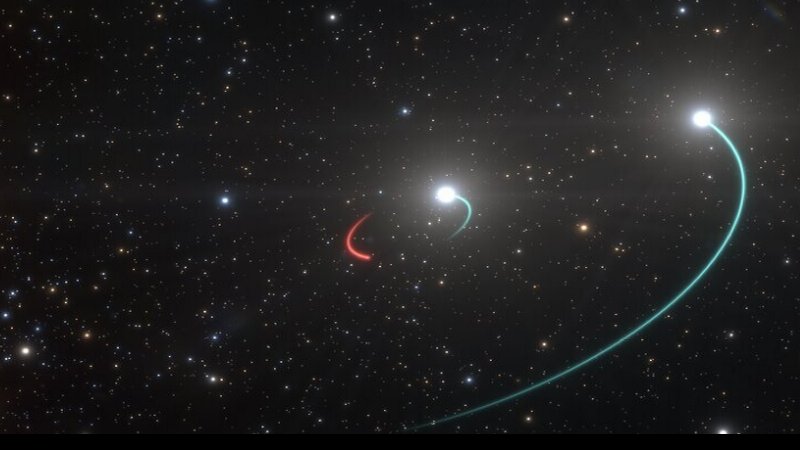Peculiar Gas Cloud Formed During Confrontation Between Two Stars
Eddie Gonzales Jr. – MessageToEagle.com – Astronomers using the Atacama Large Millimeter/submillimeter Array (ALMA) have spotted a peculiar gas cloud that resulted from a confrontation between two stars.
One star grew so large it engulfed the other which, in turn, spiraled towards its partner provoking it into shedding its outer layers.
 ALMA reveals the beautiful results of a struggle between two stars: a complex of gas clouds around binary star HD 101584. ALMA (ESO/NAOJ/NRAO), Olofsson et al. via Chalmers University of Technology, Gothenburg, Sweden
ALMA reveals the beautiful results of a struggle between two stars: a complex of gas clouds around binary star HD 101584. ALMA (ESO/NAOJ/NRAO), Olofsson et al. via Chalmers University of Technology, Gothenburg, Sweden
For the Sun and stars like it, this change will take it through a phase where, having burned all the hydrogen in its core, it swells up into a large and bright red-giant star. Eventually, the dying Sun will lose its outer layers, leaving behind its core: a hot and dense star called a white dwarf.
“The star system HD101584 is special in the sense that this ‘death process’ was terminated prematurely and dramatically as a nearby low-mass companion star was engulfed by the giant,” lead author of the study, Hans Olofsson of the Chalmers University of Technology, Sweden, said in a press release.
Astronomers now know what happened in the double-star system HD101584 was akin to a stellar fight.
As the main star puffed up into a red giant, it grew large enough to swallow its lower-mass partner. In response, the smaller star spiraled in towards the giant’s core but didn’t collide with it. Rather, this maneuver triggered the larger star into an outburst, leaving its gas layers dramatically scattered and its core exposed.
 This chart shows the location of HD101584, a gas cloud surrounding a binary star recently studied with ALMA and APEX, in the constellation of Centaurus. The map shows most of the stars visible to the unaided eye under good conditions, and HD101584 itself is highlighted with a red circle on the image. Credit: ESO, IAU and Sky & Telescope
This chart shows the location of HD101584, a gas cloud surrounding a binary star recently studied with ALMA and APEX, in the constellation of Centaurus. The map shows most of the stars visible to the unaided eye under good conditions, and HD101584 itself is highlighted with a red circle on the image. Credit: ESO, IAU and Sky & Telescope
The team says the complex structure of the gas in the HD101584 nebula is due to the smaller star’s spiraling towards the red giant, as well as to the jets of gas that formed in this process. As a deadly blow to the already defeated gas layers, these jets blasted through the previously ejected material, forming the rings of gas and the bright bluish and reddish blobs seen in the nebula.
A silver lining of a stellar fight is that it helps astronomers to better understand the final evolution of stars like the Sun.
“Currently, we can describe the death processes common to many Sun-like stars, but we cannot explain why or exactly how they happen,” says co-author Sofia Ramstedt from Uppsala University, Sweden.
“HD101584 gives us important clues to solve this puzzle since it is currently in a short transitional phase between better studied evolutionary stages.
“With detailed images of the environment of HD101584 we can make the connection between the giant star it was before, and the stellar remnant it will soon become.”
Written by Eddie Gonzales Jr. – MessageToEagle.com Staff










